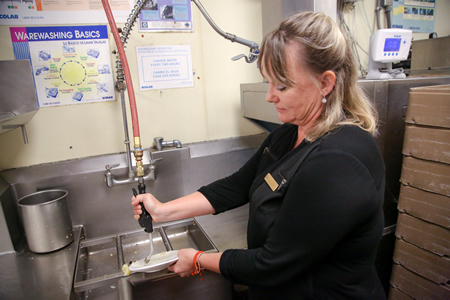South Coast Water District expects to reset its water rates by July 1 and begins a series of public workshops beginning Monday, Nov. 23, to review operating cost forecasts and use by residential and commercial customers.

The water district, which serves 35,000 customers between South Laguna and other nearby south-county cities, is undertaking a rate study for the first time in 10 years, general manager Andy Brunhart said.
Water consumption by customers in South Coast and Laguna Beach County Water District, which serves 19,000 customers in Laguna Beach, exceeded the state-mandated 24 percent use cutback in recent months. The resulting drop in revenue due to conservation during the drought will yield deficits this fiscal year for both districts, estimated at $600,000 in the Laguna district and $2.5 million for South Coast.
Both districts are foregoing imposing extraordinary rate hikes and absorbing the losses by tapping rate-stabilization funds, said Brunhart and Chris Regan, assistant general manager in Laguna.
“The board doesn’t want to punish those who are conserving,” said Regan. As of September, 95 percent of the district’s customers are being billed at the district’s lowest cost tier. By comparison, in 2011 just 80 percent were low tier water users, Regan said.
Even so, Laguna residents will see a slight increase in their water bills beginning Jan. 1, with each 748-gallon unit of water in the low-cost tier increasing to $4.61 compared to $4.25 currently. In 2014, prior to the governor’s historic mandate to conserve, the district adopted a rate structure that escalates charges slightly over five years based on projected expenses, water costs and inflation. Laguna is entirely dependent on importing water from the Metropolitan Water District.
South Coast’s rate study will culminate in new rates for consumers of drinking water, wastewater, and recycled water. The rate analysis will consider projected costs for two major district initiatives, Brunhart said. Construction should begin shortly on an estimated $60 to $100 million relining of a two-mile tunnel in the ocean bluffs of South Laguna with a 24-inch sewer main. And planning is underway for a $65 million desalination plant in San Juan Creek that should transform 5 million gallons of seawater into drinking water daily.
The timetable for financing both projects may exceed the typical five-year rate study depending on how the board decides to pay for the improvements, Brunhart said.
Currently, residential users in South Coast pay a range of $2.25 to $6.27 per 748-gallon unit. About 80 percent of its customers are low-tier users, and that hasn’t changed much, Brunhart said. The top 50 users, resorts, homeowner’s associations and government, cut their consumption 40 percent with an array of initiatives, he said.
South Coast expects to wean two more big users off potable water in the next month by extending recycled lines, he said.
Monday’s workshop in district headquarters at 31592 West St. is set for 1 to 4 p.m. Others are scheduled for 9 a.m. to noon, Monday, Dec. 7; 8:30 to 11:30 a.m., Tuesday, Dec. 15; and 1 to 4 p.m., Thursday, Jan. 7.
“No rates or recommendations will be adopted at these workshops. They are meant to be informational working sessions with opportunity for public comments,” Brunhart said.
Laguna continues to use peer pressure on high water-using customers by issuing report cards that compare consumption on similarly sized properties nearby. Water guzzlers receive a letter with a red frowning-face. Reformed guzzlers receive letters with smiley faces. “It generates a lot of calls,” Regan said. “The biggest drawback is billing every two months.”
Laguna hopes to remedy that lag in information by installing smart meters, which will supply nearly real time feedback from customers and detect leaks within hours of a failure. A bid for the $3 million contact is expected to come to the City Council in January, Regan said.




